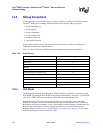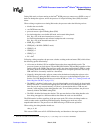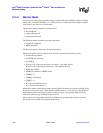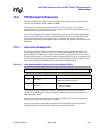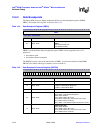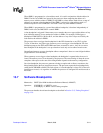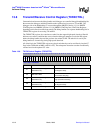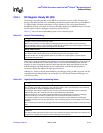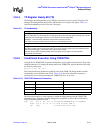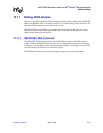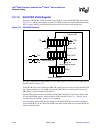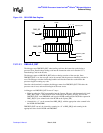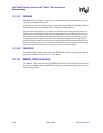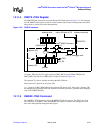
13-14 March, 2003 Developer’s Manual
Intel
®
80200 Processor based on Intel
®
XScale
™
Microarchitecture
Software Debug
13.8.2 Overflow Flag (OV)
The Overflow flag is a sticky flag that is set when the debugger writes to the RX register while the
RR bit is set.
The flag is used during high-speed download to indicate that some data was lost. The assumption
during high-speed download is that the time it takes for the debugger to shift in the next data word
is greater than the time necessary for the debug handler to process the previous data word. So,
before the debugger shifts in the next data word, the handler is polling for that data.
However, if the handler incurs stalls that are long enough such that the handler is still processing
the previous data when the debugger completes shifting in the next data word, an overflow
condition occurs and the OV bit is set.
Once set, the overflow flag remains set, until cleared by a write to TXRXCTRL with an MCR.
After the debugger completes the download, it can examine the OV bit to determine if an overflow
occurred. The debug handler software is responsible for saving the address of the last valid store
before the overflow occurred.
13.8.3 Download Flag (D)
The value of the download flag is set by the debugger through JTAG. This flag is used during
high-speed download to replace a loop counter.
The download flag becomes especially useful when an overflow occurs. If a loop counter is used,
and an overflow occurs, the debug handler cannot determine how many data words overflowed.
Therefore the debug handler counter may get out of sync with the debugger - the debugger may
finish downloading the data, but the debug handler counter may indicate there is more data to be
downloaded - this may result in unpredictable behavior of the debug handler.
Using the download flag, the debug handler loops until the debugger clears the flag. Therefore,
when doing a high-speed download, for each data word downloaded, the debugger should set the D
bit.



